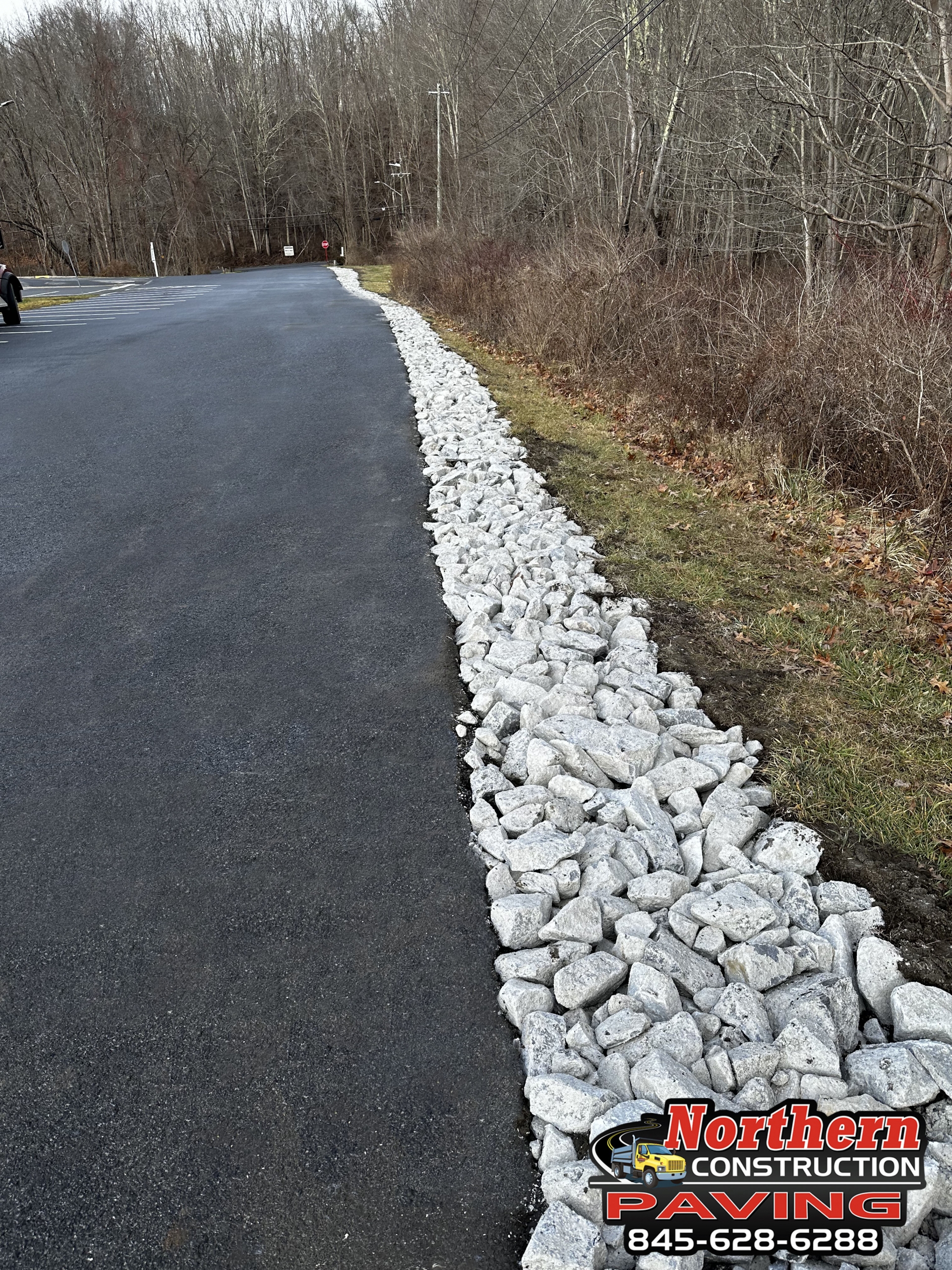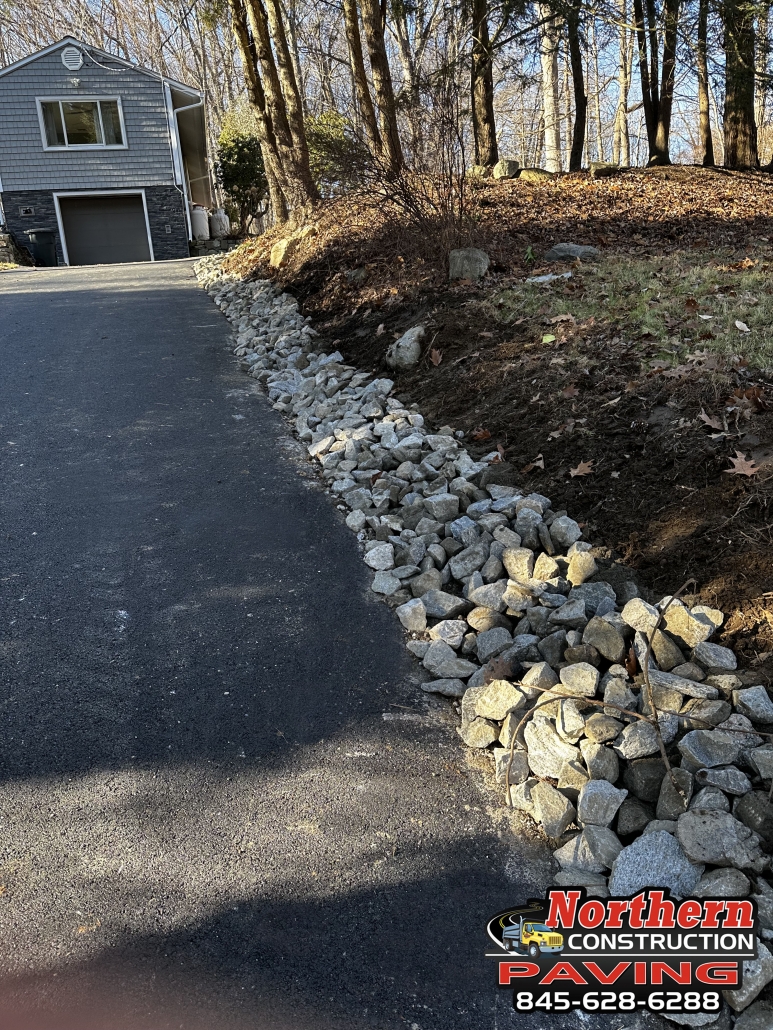What Is A Swale?
A Swale is a broad channel that routes water runoff towards low ground. They are generally angled in a U or V shape. This allows for a high volume of water to travel through the channel efficiently. Generally speaking, swales are usually installed in locations where heavy water runoff flows towards low ground. For example, a residence built into a hill may have a drainage swale in the backyard to prevent water from pooling near the house. Another common location where you will see swales is next to a sloped driveway. Driveways sit on top of the sub-base and the base can be washed out if water gets underneath the asphalt. This could result in the asphalt caving in and unnecessary costly repairs. In this blog, you will learn about how to install a dirt or rip rap swale and when to use either material during an installation.
How To Install A Grass Or Rip Rap Swale
Most swales are only a few feet wide, typically 3-5 feet. However, the size of the swale depends on the water volume that will be traveling through it at a given time. It’s important to remember that if the swale isn’t deep or wide enough, heavy runoff may overrun it. This can cause a washout and erosion. In some cases, a swale doesn’t need to be very wide or deep to be effective. The angle of the channel and the pitch of the slope will determine how wide and deep the swale should be dug. Now let’s talk about what should line the swale channel. Grass or ripap? For areas with heavy runoff like steep slopes, riprap is a great material to line the channel with. Riprap is a 4-6 inch-sized piece of rock and is a popular choice for drainage swales on steep grades. The rocks slow down the water runoff and prevent erosion of the soil. In contrast to riprap, grass swales are commonly installed in areas that don’t have steep grades. They are generally larger and wider than riprap swales. Erosion of the soil is not taken into account with a grass swale. This is because water traveling through it will be flowing at a much slower rate than a riprap swale.





